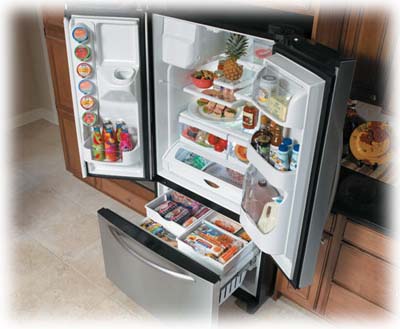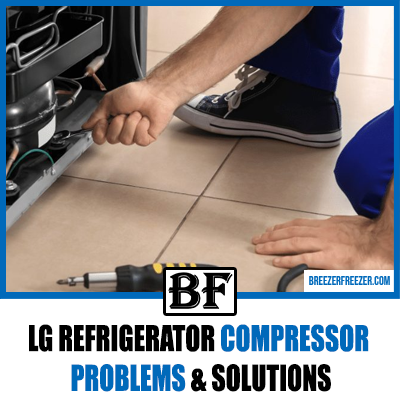How Much Electricity Do Countertop Ice Maker Use
Have you been wondering how much electricity do countertop ice makers consume? If so, we’ve got it covered for you. Read on as we delve into some aspects of this appliance plus answer some frequently asked questions about countertop ice maker including:
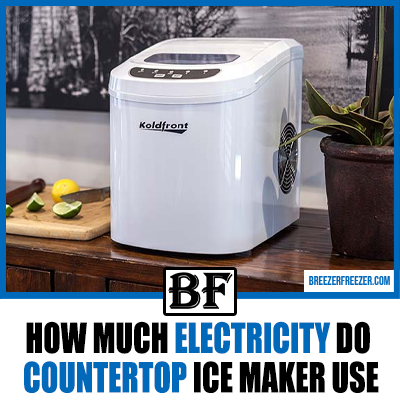
- How much electricity does it take to make ice?
- How many watts does a countertop ice maker use?
- How many watts does a fridge use?
- Can I leave my countertop ice maker on all the time?
A countertop ice maker is a convenient way to make ice at home instead of purchasing from a grocery store. It consumes less energy and varies between 150 watts to 300 watts. Additionally, the energy-efficient model consumes less electric power. Note that energy consumption varies with the brands and models.
How much electricity does it take to make ice?
Whether a fridge or countertop ice maker, the electricity consumption varies for different brands and models. Before, power consumption was more in electrical home appliances. However, it has reduced as manufacturers have become more conscious of the environment.
Additionally, they have become aware that consumers are looking for more energy-efficient appliances. Energy Star certified appliances use less energy leading to a low electricity bill
How many watts does a countertop ice maker use?
A countertop ice maker’s electricity consumption varies typically between 150 watts-300 watts. Note that power consumption may differ according to the brand and models.
How many watts does a fridge use?
If you have an older model refrigerator, more power consumption will be. However, a modern-day fridge with Energy Star certification consumes less energy, approximately 350kWh in a year.
Can I leave my countertop ice maker on all the time?
Yes, you can leave your countertop ice maker on for as long as possible. However, if you don’t need ice, you don’t have to leave the ice maker on all the time.
If you’re leaving your ice maker on for a longer duration, make sure it has enough water in the reservoir.
To make ice, you need water to freeze it, and if it’s empty, the machine will stop working. Also, insufficient water in the reservoir will automatically shut off. It would be better to turn off the machine if you’re going out of town or don’t need it.
But make sure to dust off and clean the machine if you’re using it after a long gap. Dust or debris may pile up if not in use for a longer duration, and there might be a mold build-up in the machine due to minerals. So, it’s advisable to clean the ice maker before you start running it for clean and quality ice.
Note that most portable ice makers don’t come with an energy rating.
Therefore, it would be best to use an ice maker only when required to have low power consumption leading to fewer electricity bills. Furthermore, proper maintenance leads to the durability of the machine.
Is it cheaper to make ice or buy it?
We don’t have a definite answer as the answer may vary for many. Additionally, multiple factors may lead to variation in opinions. Some may say it’s better to buy ice from a grocery store as it’s available at an affordable price. And having an ice maker means there is an additional cost in your electricity bill.
But investing in a portable ice maker allows you to get ice anytime, especially during gatherings or parties. Plus, you don’t have to rush to the store to buy ice if it runs out.
You may have to shell out some cash to buy this machine, but it’s a good investment in the long run.
Moreover, you can turn off the countertop ice maker if you don’t need ice. That way, you can save energy leading to a lesser electric bill. And ice made in the home is hygienic and cleaner than ice cubes bought from a store.
So, it would be wise to get a portable ice maker if you constantly need ice in your drinks.
You can opt for ice cubes from the store if you don’t need them regularly but make sure that it’s IPIA certified. It ensures that the ice cubes are made from filtered water and have passed the required test set by the regulating authority.
What size inverter do I need to run a portable ice maker?
Power inverters are measured in watts, and many home appliances have their wattage mentioned on the product model itself.
To choose the proper inverter size, you should see how many devices you will use. That way, you can opt for an inverter with the correct wattage. The estimated inverter watt size for a portable ice maker would range between 400watts -500 watts.
Using the right size inverter is vital to run the device efficiently and avoid overloading. For example, if you have a stereo with a wattage rating of 100 watts and your phone with 100 watts, the right inverter size is 300 watts. Likewise, you will need a high watt size inverter for larger Wattage devices.
How often should I clean my countertop ice maker?
If you want clear and quality ice, we recommend using distilled water to make ice. It would be better to clean your countertop ice maker once a week using tap water.
There is a high intake of impurities in tap water, leading to the build-up of minerals in the machine. And weekly cleaning will avoid this problem and doesn’t affect your ice quality. Plus, it improves the efficiency of the machine and offers durability.
But if you’re using distilled water, you can clean it once or twice a month because it’s devoid of minerals and other impurities.
Conclusion
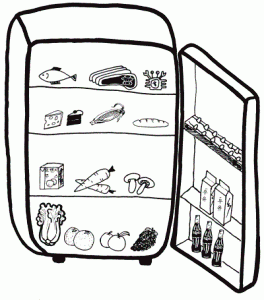
A countertop ice maker is a valuable appliance if you need ice constantly in your juice or drinks.
Plus, if you have gatherings or parties, this device offers convenience as you don’t have to rush to the store to buy packaged ice.
Moreover, countertop ice maker electricity consumption is less and varies between 150 watts- 300 watts, and it also depends on the brands and models.
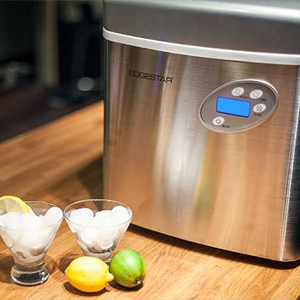


![Brand New Fridge Making Noise? [17 Causes & Fixes!]](https://breezerfreezer.com/wp-content/uploads/2023/10/Brand-New-Fridge-Making-Noise.png)

